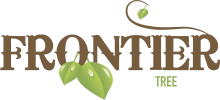Interlaken Tree Fertilization
Interlaken Tree Fertilization

Tree Fertilization Interlaken Company
Frontier Tree Company
The main reason for fertilizing trees and shrubs in the landscape is to maintain reasonable vigor so that plants will be able to resist environmental stresses and pests.
Monmouth County Tree Fertilization Frontier Tree Company
Trees and shrubs in a landscape may require little or no supplemental fertilization if plants are sited correctly, fallen leaves are shredded in place, nutrient-containing mulch is used or surrounding turf areas are fertilized.
Price Quote Tree Fertilization Interlaken
Fertilization is not a panacea. Don’t expect it to solve problems associated with careless planting, improper watering or poor drainage. Be certain that new trees and shrubs are suited to the climate and location.
Is fertilizer needed?
Residential & Commercial Tree Fertilization Near Me Interlaken
Often landscape trees are planted into soils with low fertility. When possible, conduct a soil test to determine whether the soil at the planting site is deficient in phosphorus or potassium. Because these nutrients do not move through the soil very well when they are surface applied, amending the soil to recommended levels at planting time may promote establishment of the tree.
Best Interlaken Tree Fertilization
Avoid fertilizing newly planted trees with a high rate of nitrogen fertilizer. This may stimulate excessive leaf growth at the expense of root growth, leaving the new tree susceptible to drought stress. Usually a light surface application of nitrogen fertilizer one month after planting will promote establishment.
Recent Client Service Area: 07712
In most landscape situations, leaves are raked from beneath shade trees to facilitate the growth of turf. Removal of leaves eliminates the recycling of nutrients that occurs in the natural habitats of tree species used in the landscape. Fertilization may be necessary to compensate for nutrients “mined” from the tree root zone by leaf removal.
Tree Health Nutrients Interlaken
Signs of low nutrition are poor tree growth, pale green or yellow leaves, mottled patterns between the veins, dead spots, stunted leaves or early loss of leaves.
Check tree growth by measuring down from the tip of the twig to the first ring of bud scale scars; this is the current season’s growth. The previous year’s growth extends between the first and second bud scale scars (Figure 1).
Determine general tree vigor by checking the growth of several twigs during the past three or four years. Twig growth on most young trees should be 9 to 12 inches or more per year. Large, mature trees may grow only 4 to 6 inches per year.
